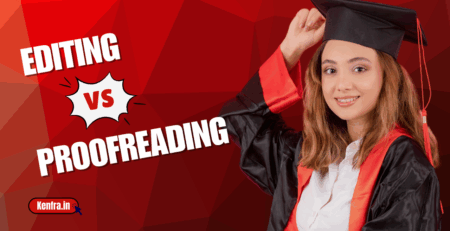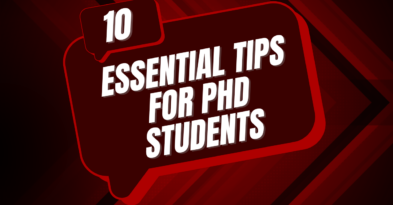Practical Tips for Writing Results and Discussion Sections Clearly
Kenfra Research - Bavithra2025-09-26T17:08:54+05:30When working on a research paper, thesis, or dissertation, presenting your findings effectively is crucial. It’s just as important as conducting the research itself. Tips for writing results and discussion sections clearly can make a huge difference in how your work is understood and valued. Many students and researchers struggle to balance clarity, accuracy, and conciseness when presenting data. By following practical tips for writing results and discussion, you can communicate your findings in a way that engages your readers and satisfies academic standards.
In this guide, we’ll explore academic writing tips that cover both the results section and the discussion section. We’ll also highlight common mistakes to avoid, offer a step-by-step guide, and show you the best way to present results and discussion in a paper.
Tips for Writing Results and Discussion

1. Understand the Purpose of Results and Discussion
Before diving into writing, it’s important to understand their roles:
- Results Section: Presents your findings objectively, using tables, figures, and concise text.
- Discussion Section: Interprets the results, explains their implications, and connects them to existing literature.
2. Structure Your Results Logically
- Present data in the same order as your research questions or hypotheses.
- Use tables and figures effectively, with descriptive captions.
- Avoid repeating data in text if already shown in visuals.
Good writing results in research papers is all about logical flow and easy navigation for the reader.
3. Keep the Language Clear and Concise
Clarity is the foundation of scientific writing. Long, complex sentences may confuse readers. Instead:
- Use active voice where appropriate.
- Avoid jargon unless absolutely necessary.
- Stick to reporting facts in the results and save interpretation for the discussion.
These tips for writing clear and concise results section apply equally to theses, dissertations, and journal articles.
4. Link Results to the Research Objectives
A strong results section is always connected back to the research purpose. This makes the transition to the discussion section smoother.
If you’re working on how to write results and discussion for a dissertation, this approach helps ensure both sections feel cohesive rather than isolated.
5. Write an Engaging Discussion Section
When learning how to write discussion section, remember it’s your opportunity to:
- Interpret your findings.
- Compare them with previous studies.
- Highlight their significance.
- Suggest future research directions.
Effective research paper discussion section tips also include acknowledging limitations—this shows academic honesty and strengthens your credibility.
6. Avoid Common Mistakes
Here are some common mistakes in writing results and discussion you should avoid:
- Mixing results with interpretations in the results section.
- Overstating findings without enough evidence.
- Ignoring negative or unexpected results.
- Using vague terms instead of specific data.
These errors can reduce the impact of your work in scientific publishing and journal submission tips.
7. Use Headings and Subheadings for Clarity
Example headings:
- Results: Overview of Findings
- Discussion: Interpretation and Implications
This approach aligns with academic writing skills and enhances writing a thesis efficiently.
8. Refer to Well-Written Examples
Studying examples of well-written results and discussion sections can give you insights into tone, structure, and style. Many published journal articles follow a consistent pattern you can adapt for your own work.
9. Step-by-Step Guide for Results and Discussion Writing
A step-by-step guide to writing results and discussion in research can be summarized as follows:
- Gather and organize your data.
- Select the most relevant findings.
- Present them clearly with visuals.
- Write objective descriptions.
- Transition smoothly to discussion.
- Interpret and analyze.
- Compare with past studies.
- Conclude with significance and recommendations.
10. Edit and Proofread Thoroughly
Even the best research can lose credibility if presented with errors. Editing ensures your work meets the highest standards for thesis writing, academic writing, and scientific publishing.
- Check grammar and punctuation.
- Ensure consistent formatting.
- Verify all references are cited correctly.
11. Tailor for Your Audience
If you’re submitting to a journal, follow its specific guidelines for research methodology and research paper formatting. For a thesis or dissertation, comply with your institution’s style guide.
12. Present with Confidence
Finally, remember that best way to present results and discussion in a paper is with clarity, honesty, and logical reasoning. A well-structured, concise presentation increases your chances of successful journal submission and positive reception from readers.
Conclusion
Mastering the skill of writing results and discussion sections is essential for academic success. By applying these tips for writing results and discussion, you’ll not only improve your academic writing skills but also enhance your research’s visibility and impact in scientific publishing.
At Kenfra Research, we specialize in guiding researchers, scholars, and students in crafting results and discussion sections that meet the highest academic standards. Whether you’re preparing a thesis writing guide, drafting a research paper, or submitting to a high-impact journal, these strategies will help you present your work with precision, clarity, and confidence.











Leave a Reply